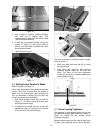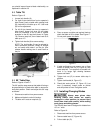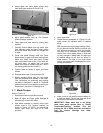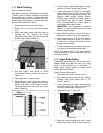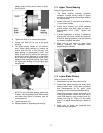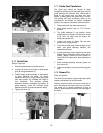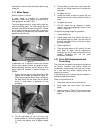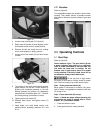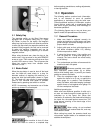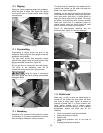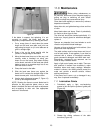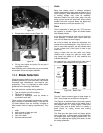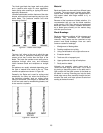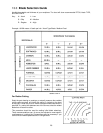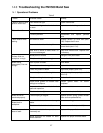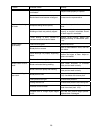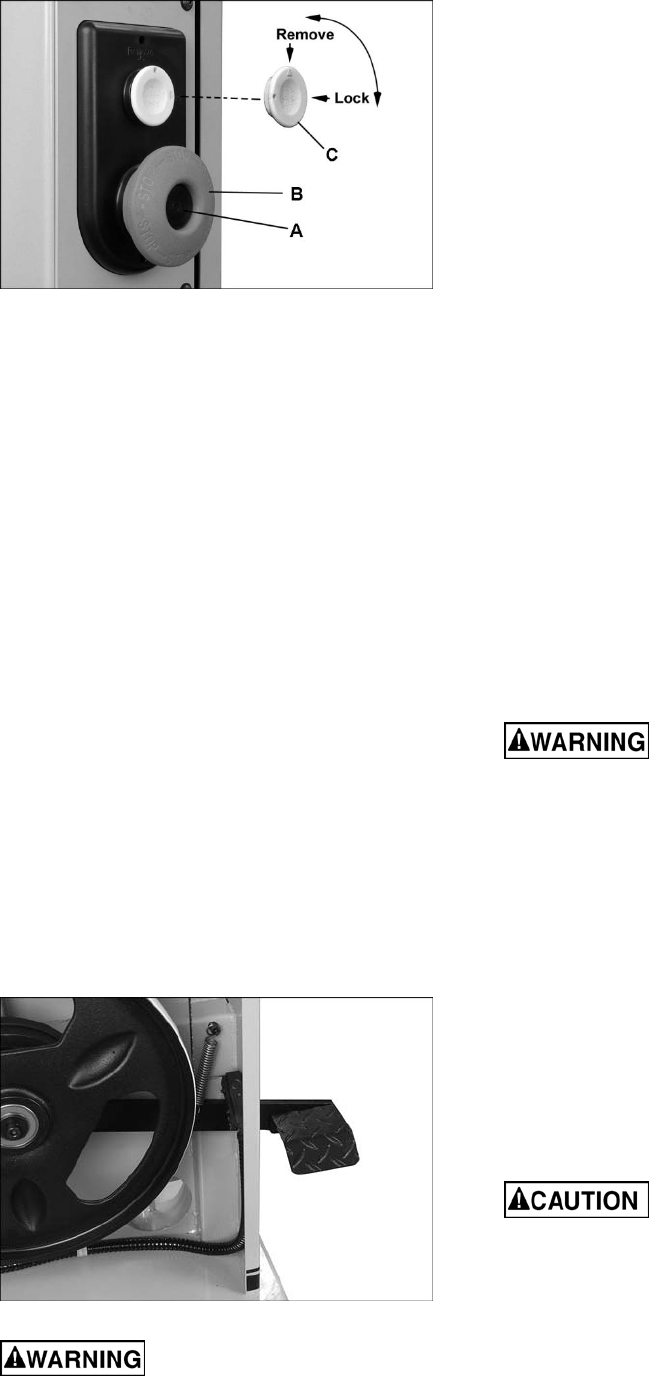
21
Figure 36
9.2 Safety Key
The start/stop switch on the Band Saw comes
equipped with a magnetic safety key (C, Figure
36). When in place on the switch, the magnetic
safety key trips a relay which will allow the machine
to start and stop when the respective switches are
pressed. Being magnetic, the lock can be removed
to make the machine inoperable and can be
hidden for safe storage by attaching it to another
magnetic surface.
When using the band saw, place the key on the
switch cover, lining up arrow on key with REMOVE
arrow on cover. Then rotate key so that arrow lines
up with LOCK arrow on cover. This will prevent the
safety key coming loose from vibration when
machine is in use.
9.3 Brake Pedal
When the stop button is used to shut off the band
saw, the blade will coast slowly to a stop. An
alternate method of stopping the machine is to
press and hold the brake pedal, shown in Figure
37. The blade will stop moving in approximately
three to four seconds after pedal is pressed.
Restart saw by pressing start switch on column.
NOTE: Unnecessary and excessive use of brake
pedal may shorten life of brake pad.
Figure 37
After machine is shut off, allow
wheels and blade to come to a complete stop
before opening guards/doors, making adjustments,
or leaving the area.
10.0 Operation
The following section contains basic information,
and is not intended to cover all possible
applications or techniques using the band saw.
Consult published sources of information, acquire
formal training, and/or talk to experienced band
saw users to gain proficiency and knowledge of
band saw operations.
(The following figures may or may not show your
specific model, but procedures are the same.)
10.1 General Procedure
1. Make sure blade is adjusted correctly for
tension and tracking, and that upper and lower
guide bearings and thrust bearings are set in
proper relation to blade.
2. Adjust guide post so that guide bearings are
just above workpiece (about 1/8”) allowing
minimum exposure to blade.
3. If using the fence, move it into position and
lock it to guide rail. If using miter gauge for a
crosscut, the fence should be moved safely
out of the way.
4. Turn on band saw and allow a few seconds for
machine to reach full speed.
Whenever possible, use a push
stick, hold-down, power feeder, jig, or similar
device while feeding stock, to prevent your hands
getting too close to the blade.
5. Place the straightest edge of the workpiece
against the fence for a rip cut; or against the
miter gauge for a crosscut. Push workpiece
slowly into blade, while also keeping it pressed
against fence or held against miter gauge. Do
not force workpiece into blade.
Additional operating tips:
Make relief cuts whenever possible. A relief cut is
an extra cut made through the waste portion of a
workpiece up to the layout line. When that
intersection is reached by the blade while following
the layout line, the waste portion comes free. This
helps prevent pinching of the back edge of the
blade in the cut.
When cutting, do not overfeed
blade; overfeeding will reduce blade life, and may
cause blade to break.
When cutting long stock, the operator should use
roller stands, support tables, or an assistant to help
stabilize the workpiece.



